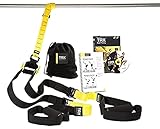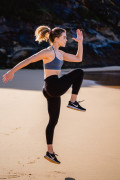Tips for Effective Bodyweight Workout Routines
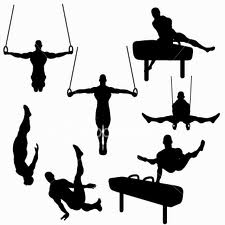

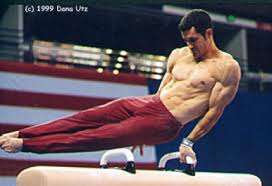
Bodyweight Training is Serious Training
When you think of bodyweight training the first exercises that come to mind are probably some of the following:
- Push-ups
- Squats
- Sit-ups
- Pull-ups
- Dips
While these are all effective exercises and the many variations are used by elite athletes to develop strength, power, endurance and muscle, bodyweight training offers much more to those who are willing to put in the effort.
Bodyweight exercises are often second choice for a ‘serious’ training program, or at most an addition to a free weight program. Yet for the average person, a regular routine of push-ups, pull-ups, dips, stairs and other exercises without weights will provide years of challenges which won’t necessarily be surpassed with free weights.
Even professional athletes have been known to rely solely on, or primarily on, bodyweight workouts. Two perfect examples are Herschel Walker and Hall-of-Famer Ricky Hendersen.
Bodyweight training is also convenient. The world becomes your gym and it is always open. With a handful of inexpensive training equipment you can expand the experience, but no equipment is necessary. A bodyweight training program is also easy to scale to individual fitness levels. Use these tips to vary the exercises and start off within your ability.
Here are some important tips to make your bodyweight workouts effective no matter what your goals are.
Bodyweight Workout Tips
- Work to failure. But do it differently each day. See below.
- Do bodyweight exercises daily, but vary the intensity. For example: Day 1: High intensity, high reps to absolute failure w/ full range of motion. Day 2: Isometric holds to failure w/ minimal full range of motion reps. Day 3: Explosive reps until speed slows
- Do light and slow repetitions for recovery. So after a high intensity day followed by a moderate intensity day, do a recovery day. No repetitions are too failure, and all are done slowly
- On recovery days, incorporate extensive stretching. On active days, incorporate stretching
- Warm up by rotating head, shoulders, arms, hips, knees and ankles. This is a great way to prepare your body for bodyweight exercises
- As with free weights or machines, vary your workouts to prevent overtraining. If your body is sore or you feel exhausted, do a short recovery workout and rest
- Emphasize power, strength, endurance or hypertrophy. There can be some overlap though, for example:
- Day1: Strength/hypertrophy (Increase exercise difficulty+use isometric holds+full range of motion to failure)
- Day 2: Power/strength endurance (Perform explosive reps + longer isometric holds and higher reps of easy to moderate difficulty exercises)
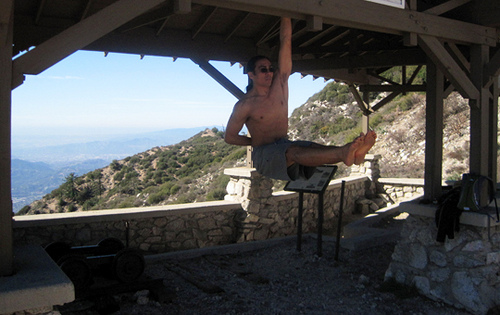
Master the Bodyweight Basics
Master these basic bodyweight exercises before progressing to harder exercises that place a greater strain on the muscles, tendons, joints and nervous system.
Pushups: Why is the pushup such a staple in bodyweight workouts and exercise routines everywhere? For one thing it is a great upper body developer, and with slight adjustments of the hands will vary the stresses on the pectorals, shoulders, and triceps.
Another reason this is a great exercise is because it teaches the user to stabilize their body in a straight plank to perform it right. The abdominals need to be tight, the legs straight and the lats and trapezius engaged to prevent sagging.
Start with flat pushups, done on the knees if necessary, maintaining a flat line from head to toe. Start with a minimum of 3 sets of 5-10 repetitions each, do more if you can.
Close "Grip" Pushups: Get into pushup position and bring your hands as close together as you comfortably can. If possible do these by forming a triangle with the inside edges of the hands touching. This version emphasizes the triceps.
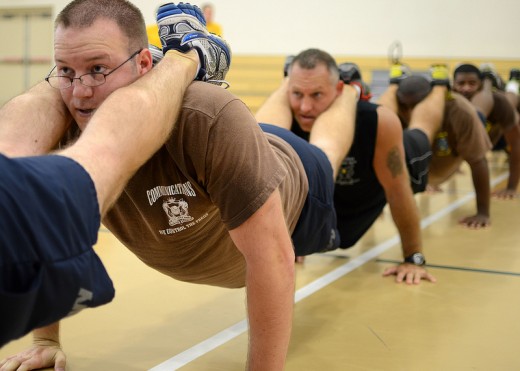
Bodyweight Squats: These are a great lower body conditioning exercise. Start with 3 sets of 15-20 and perform the reps with perfect form. Do the repetitions with 2 seconds down and 2 seconds up on a hypertrophy day, or try exploding out of the bottom position to develop power.
Do these exercises with a tight stomach and good form and your body will get stronger. Add a favorite cardio activity or sport on the same or off days to burn excess fat.
Straight Leg Lifts: Straight leg lifts are a little like reverse planks with a full range of motion. With palms on the floor under your rear, lay prone on the ground or with upper body slightly elevated, bring legs up 6-8 inches off the floor. Use this as the starting point and raise them untilperpendicular with the floor. Repeat as many times as possible.
Lunges: Perform these standing in place or taking a step with each lunge. Front leg should be parallel to ground, rear knee should almost touch the ground.
Planks: There are many versions of the plank, but until you can hold a simple plank on your elbows for 30 seconds, stick with this version. Get into the plank position like a pushup, but resting on your elbows. Stay on the balls of the feet, don't let your shoulders or midsection sag, keep everything straight.
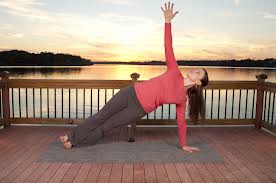
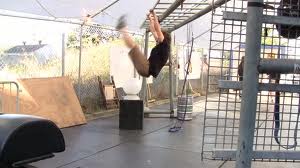
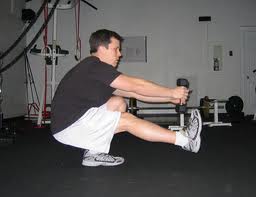
Advanced Bodyweight Exercises
These exercises are moderately advanced, but feel free to start doing them as soon as you are comfortable.
Pull-ups: Do these in strict fashion, and start the pull by engaging the scapula on both sides and then the lats. If a complete pull-up is not possible, there are several ways to work up to it:
- Hang from the bar with the shoulder engaged/scapula retracted. Do several sets of 10 second holds. End each workout by attempting a strict pull-up.
- Use a jumping motion to assist in getting up, hold at the top for 3-5 seconds and resist the negative (downward) portion of the movement, repeat 5-8 times for 3 sets.
- If available, use a stepladder or a chair to support the weight of the legs.
Dips: You can do dips on parallel dip bars, with home gym equipment like the Lebert Equalizer or between two stools or chairs. Keep the neck bent slightly forward (not down,) and lower the body until the elbows are at 90 degrees.
Extended Side Arm Plank: From pushup position, bring one leg on top of the other and extend one arm into the air as you turn the body sideways. Keep everything tight from the feet to the shoulder and reach with the extended arm.
One Leg Squat (Pistol): This is a tough movement that will build strength, focus and balance. Although it places great strain on the working leg, it requires intense contraction of the core and (in the pistol) of the free leg. Learning how to do one leg squats will require patience and practice.
Hanging Leg Raises: While hanging from a pull-up bar, engage the shoulders, pull the hips down and in while raising your legs straight out in front of you. Bring them up to perpendicular or if possible, all the way to the bar.
There are many other advanced bodyweight exercises to explore. However, mastering these exercises first will make all other movements easier.
Bodyweight Exercise Variations
Make it Harder
Once the beginning program has become easy, try these tips to make the basic and advanced movements harder:
Push-ups:
Place the hands wider for one or two sets; more emphasis will be put on the pectorals and the lats for stabilization. Place the hands closer together; more emphasis will be put on the triceps. Work up to a plyometric movement and push the body off the ground with each repetition.
Try advanced plyometric clapping pushups, or "rabbit-hops" when the whole body comes off the ground.
Another way to increase pushup difficulty is to try one of the following pushup variations:
- Divebombers
- Scorpion Pushups
- Hands to Hips Pushups
*See all three variations here: Spring Training and Bodyweight Muscle Building
Pull-Ups:
Perform power pull-ups and pull high enough to release the hands for a split second. You can also incorporate underhand pull-ups and use isometric holds to increase the work load. The granddaddy of them all? Working up to a one handed pull up.
Bodyweight Squats:
Use 10 second isometric holds in the squat position every 5 repetitions. Perform a one legged squat with the free leg in front or in back of you.
Another great exercise is the hack squat; go down on the balls of your feet and up on the balls of your feet. Work into these with partial repetitions and hold onto something for support if necessary.
Add Equipment
Choose one piece of equipment and a pair of gloves. The gloves protect the hands from the hard steel, wood or concrete typically found in an outdoor environment.
Equipment to consider is a suspension trainer, gymnastic rings, a weighted vest, pushup bars or dip bars.
Bringing this light toy with you opens up a whole new chapter of exercise possibilities. It can also assist or replace others. For example, if you can’t do pull-ups, use the suspension trainer for bodyweight rows. Use it for chest flyes to add variety to a chest workout.
Of course there are hundreds of bodyweight exercises in addition to the movements listed above, but the basics are an excellent foundation for any physical achievement. Give it a try today!
Continue Reading >>>
- Get Outdoors and Workout for Next to Nothing!
Getting outdoors for your summer workouts? Have fun and use some unconventional equipment to get it done! Exercise equipment doesn't have to be complicated, and you dont need to carry around heavy... - TRX More Than Just a Fad-Suspension Training Can Transform Your Body
I am always researching the latest in the industry and putting the hype to the test. This process has lead me to incorporate a few vital tools in my workouts, including TRX training and my own... - A Great Leg Workout you can do from Home
This is a workout out intended to increase muscular size, strength and endurance for all the muscles of the upper and lower legs. It is simple enough to do with a basic set of weights at home and a place to do... - MOS LADDER

